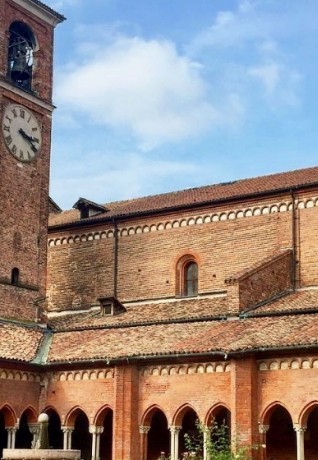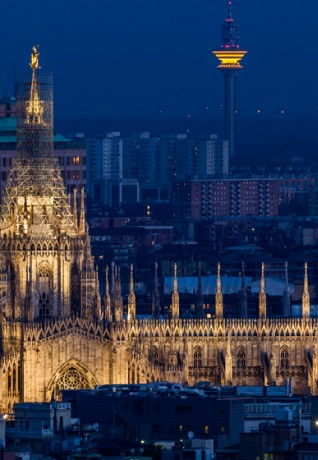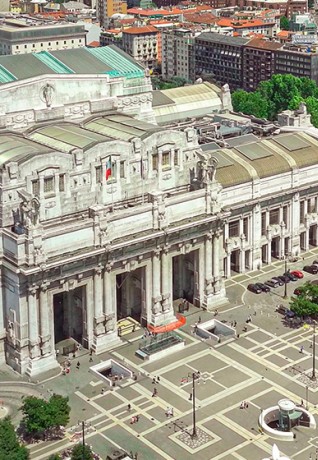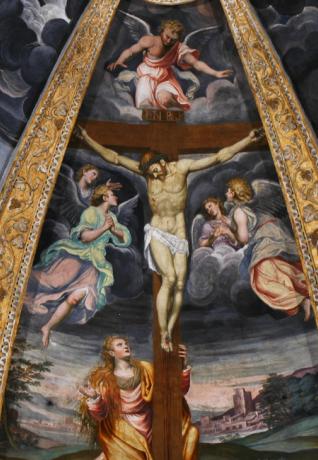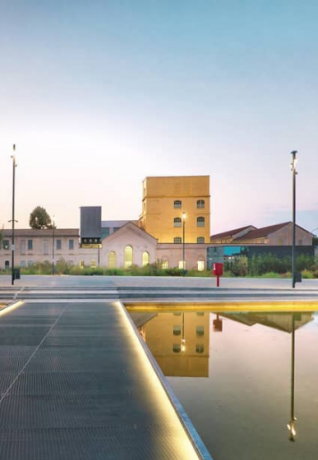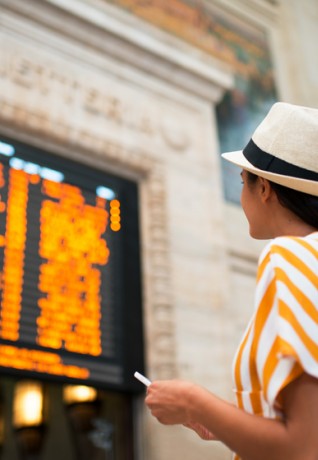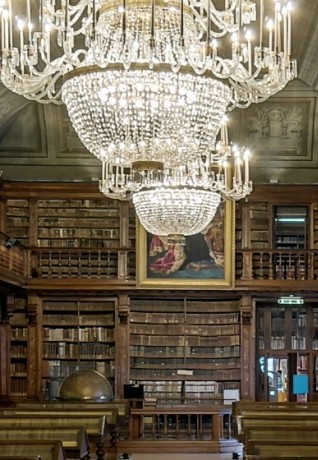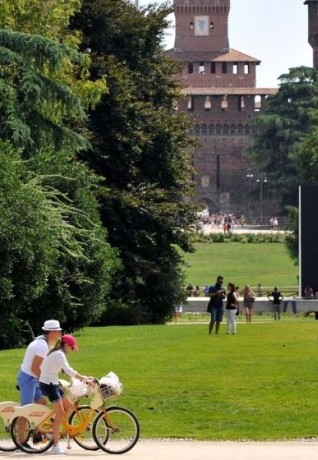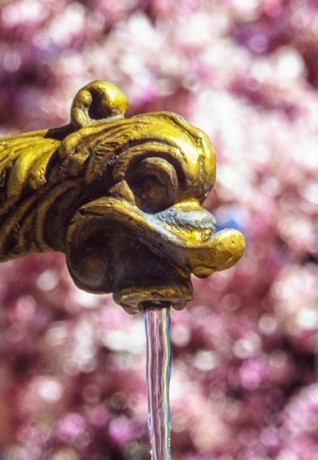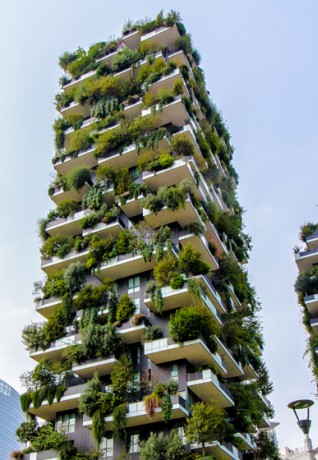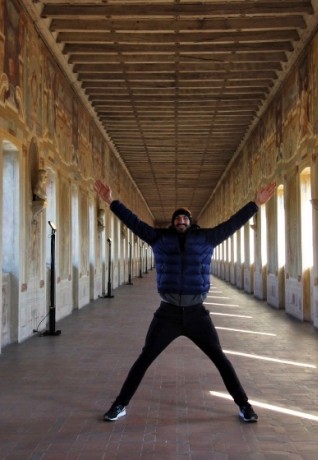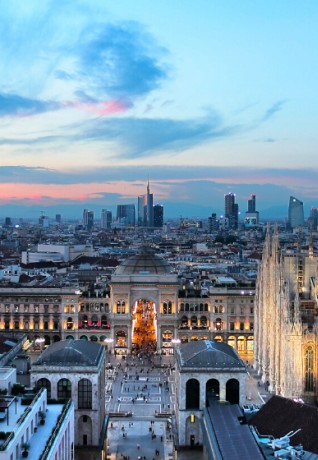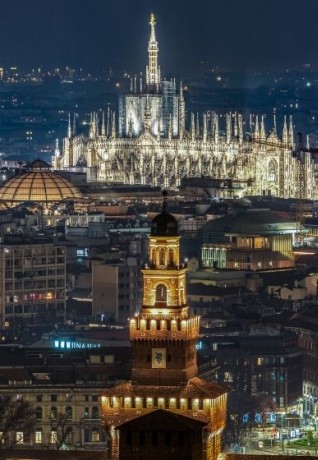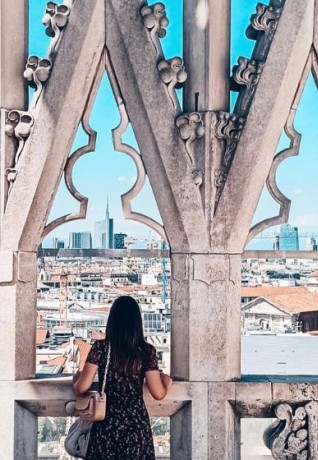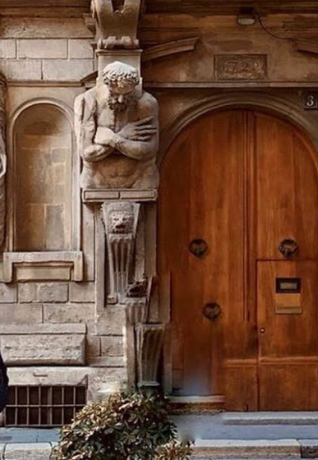Leonardo's Last Supper and the Magenta district
Discover the attractions and immerse yourself in Milanese life

Painted at the end of the 15th century, Leonardo's masterpiece The Last Supper is conserved in the refectory of the convent annex to the Santa Maria delle Grazie church. For centuries, this work has enthralled visitors from all over the world, and it is the jewel in the crown of the Magenta - San Vittore district, an area renowned for its elegant nineteenth and twentieth-century buildings and cultural attractions such as the Museo Scienza e Tecnologia Leonardo da Vinci (Leonardo da Vinci Science and Technology Museum).
Sophisticated cafes and patisseries add a touch of indulgence to the district and, thanks to Wi-Fi connections, provide comfortable places for hot desking. Cult venues such as the iconic Galleria Rossana Orlandi and discreetly hidden corners like the Frog Cloister all add to the charm.
The raconteurs of the times describe Leonardo as precise, slow and sometimes infuriating to both his rich patron and the prior of the convent. They describe him as he was leaving one morning from the Corte Vecchia, where Palazzo Reale now stands; he arrived onsite and applied only two brushstrokes to his work that day.
Discover one of the most famous artworks in history.
Reservation is compulsory and must be booked well in advance: find here the info.
How to get here: underground line M1 red Conciliazione or Cadorna stop; line M2 green Cadorna stop; tram 16
The church was constructed during a historic period of great splendour for the city, at the court of Ludovico il Moro and Beatrice d’Este, renowned as being the richest and most sumptuous in Italy.
According to legend, there is a secret passage from the Castello Sforzesco to the Santa Maria delle Grazie….
How to get here: underground line M1 red Conciliazione or Cadorna stop; line M2 green Cadorna stop; tram 16
So much to see… trains, catamarans, airplanes, models of Leonardo's machines, even a submarine that you can enter whilst still being on dry land, plus a Vega Launcher that blasts satellites into space, and a fragment of the moon! Just around the corner is the Leonardo da Vinci National Science and Technology Museum: the largest scientific and technological museum in Italy full of treasures.
How to get here: underground line M2 green Sant'Ambrogio stop; bus 94
Design lovers will already be familiar with this famous gallery in via Matteo Bandello 14, Milano. A landmark of contemporary design curated by the legendary Rossana Orlandi.
An unconventional venue where the interconnecting spaces spread over 2500 sqm create beautiful worlds within worlds almost like being with Alice in Wonderland. The careers of many successful young designers started here, given that Orlandi's intent is to showcase emerging talents.
Just one rule: everything is for sale! Anything you see you can buy, including the legendary glasses worn by the hostess!
How to get here: underground line M1 red Conciliazione stop; bus 50, 58, 68
It is said that one swallow does not make a spring but, in Milano, there is a lovely way to know if the warmer season is approaching: just head to piazza Tommaseo, right here in the Magenta district.
It is renowned as one of the most beautiful piazzas in the city, with the Liberty-style edifices, the Church of Santa Maria Segreta and the eclectic architecture of the Marcelline school building delimiting its perimeter, but in spring it becomes THE piazza to be, a lovely place to pause for a moment of relaxation amongst the gorgeous blooms.
The central garden boasts numerous magnolia trees of a particular hybrid species, which flowers quickly compared to other plants. When the thousands of buds burst into pink and white blossoms on the branches, it means that spring has truly arrived.
Insider tip: for a great way to frame your photo, one of the best perspectives is amongst the magnolias looking towards the beautiful palazzo on the corner with via Mascheroni.
How to get here: underground line M1 red Conciliazione or Cadorna stop; line M2 green Cadorna stop; tram 16
A "secret" place that often goes unnoticed by visitors to the Santa Maria delle Grazie church is the small Chiostro delle rane (Frog Cloister), located to the rear, so-called because of the four bronze frogs that adorn the rim of the central circular fountain. Each frog spurts a small jet of water towards the centre of the basin.
The cloister is completely square, five terracotta arches on each side are supported by columns and marble capitals with Renaissance motifs. The perfect location for an Instagram pic and a tranquil break away from the chaos of the city streets, it is especially charming in springtime with the flowering trees.
How to get here: underground line M1 red Conciliazione or Cadorna stop; line M2 green Cadorna stop; tram 16

 Log in
Log in



